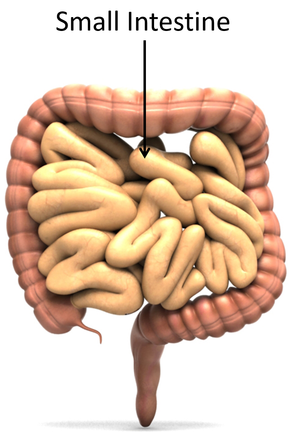Difference between revisions of "Small Intestine"
(→About The Small Intestine) |
|||
| Line 10: | Line 10: | ||
===About The Small Intestine=== | ===About The Small Intestine=== | ||
: The '''Small Intestine''' is a very long tube to give a large area to absorb nutrients. | : The '''Small Intestine''' is a very long tube to give a large area to absorb nutrients. | ||
| − | : There is around 1kg of bacteria inside the '''small intestine''' which helps [[digestion|digest]] the food. | + | : There is around 1kg of [[Bacteria in Digestion|bacteria]] inside the '''small intestine''' which helps [[digestion|digest]] the food. |
: There are [[enzyme]]s in the '''small intestine''' which break down large [[molecule]]s into smaller [[molecule]]s. | : There are [[enzyme]]s in the '''small intestine''' which break down large [[molecule]]s into smaller [[molecule]]s. | ||
: Only small [[molecule]]s can be [[absorb]]ed into the blood through the wall of the '''small intestine'''. | : Only small [[molecule]]s can be [[absorb]]ed into the blood through the wall of the '''small intestine'''. | ||
Revision as of 12:16, 16 September 2018
Key Stage 2
Meaning
The small intestine is part of the digestive system.
Key Stage 3
Meaning
The small intestine is an organ in the digestive system which absorbs nutrients into the blood.
About The Small Intestine
- The Small Intestine is a very long tube to give a large area to absorb nutrients.
- There is around 1kg of bacteria inside the small intestine which helps digest the food.
- There are enzymes in the small intestine which break down large molecules into smaller molecules.
- Only small molecules can be absorbed into the blood through the wall of the small intestine.
